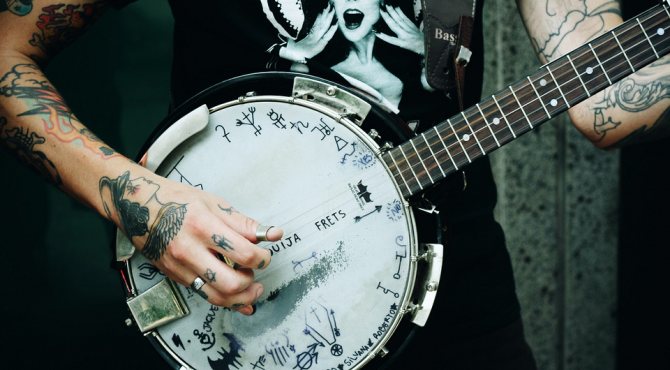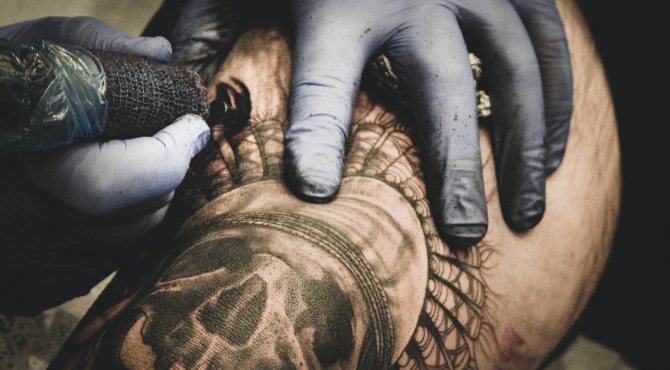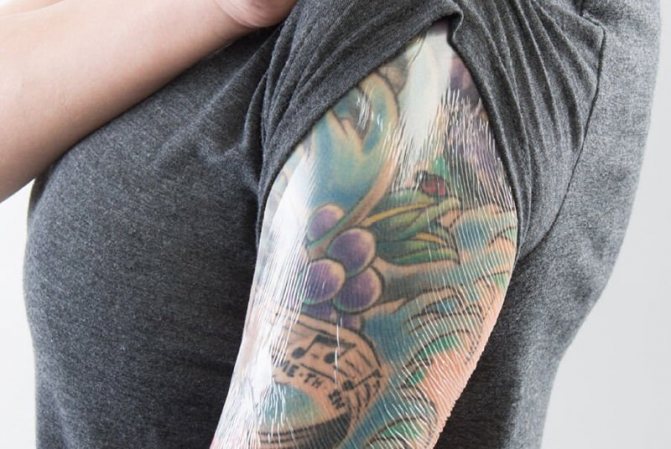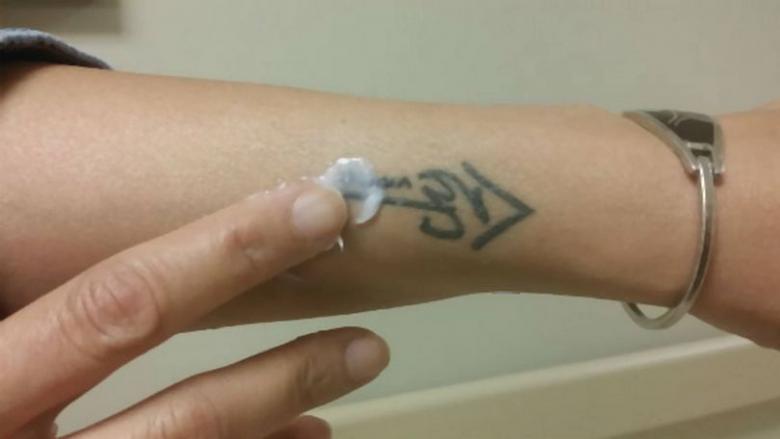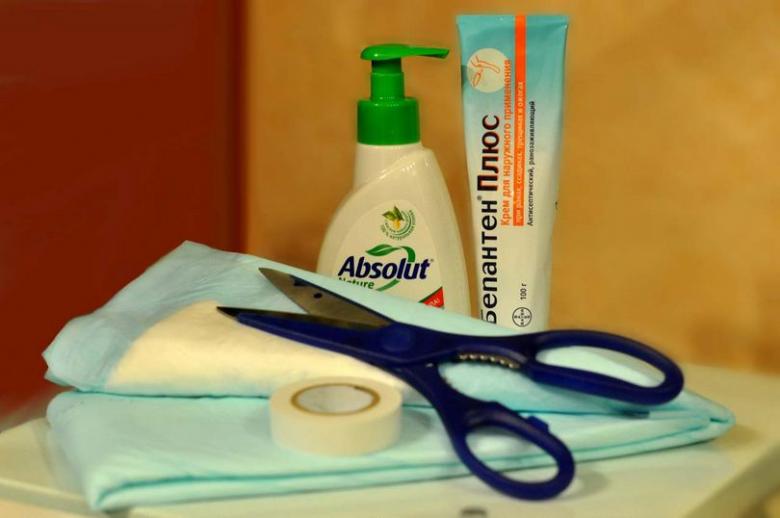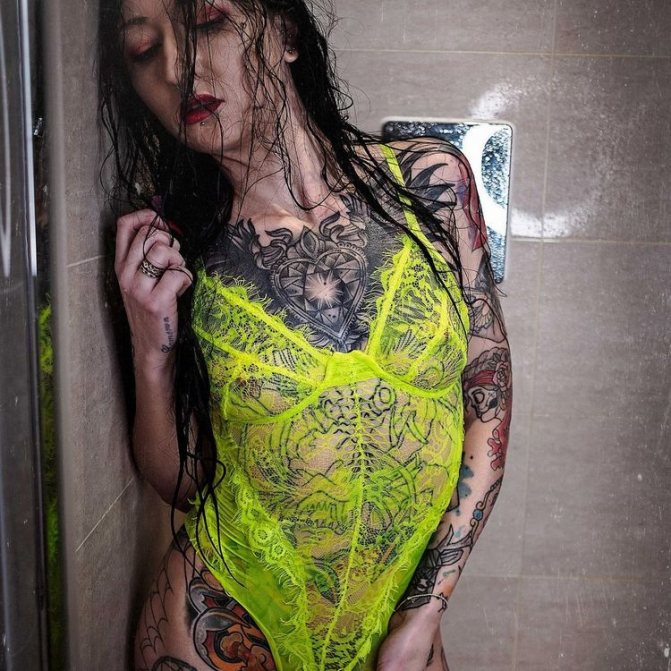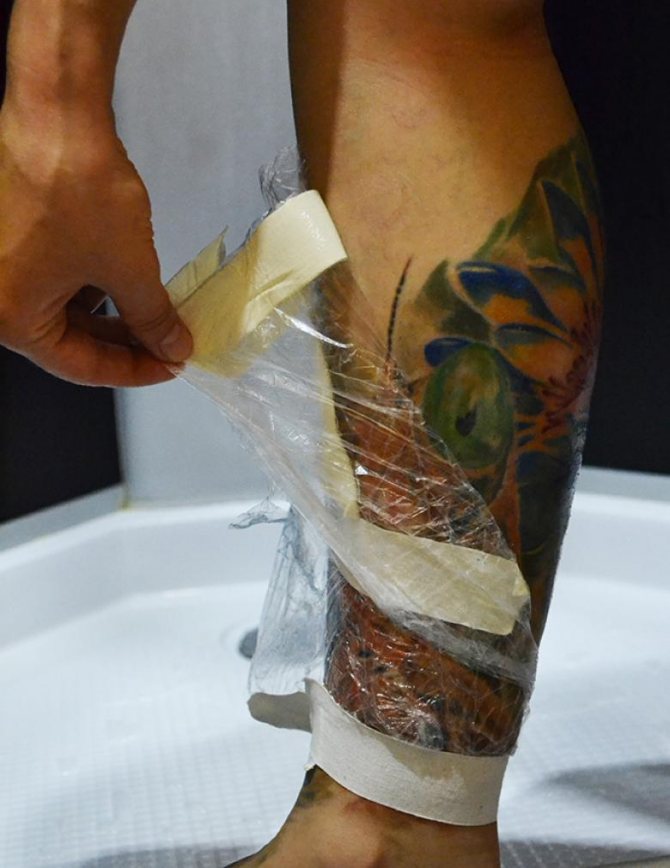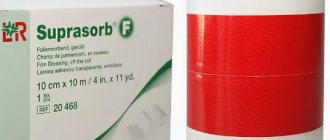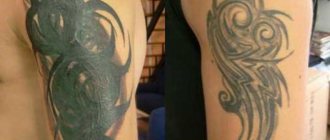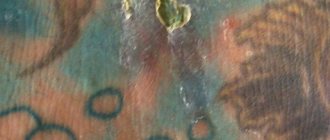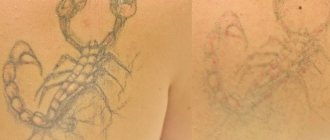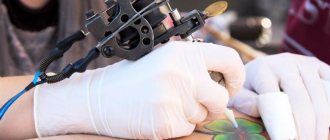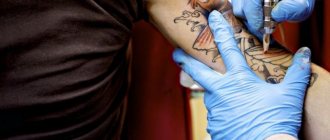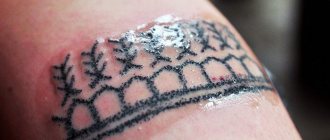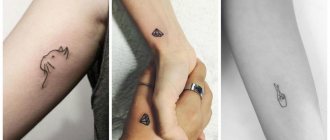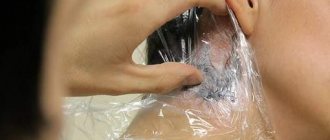The quality of the tattoo depends not only on the master, but also on you. The clarity of the lines and richness of the color will be kept only if you take care of the tattoo in the first days after application and until the complete healing. If to follow the below recommendations and advices of the master you won't suffer health damage and the image will keep its original look for many years.
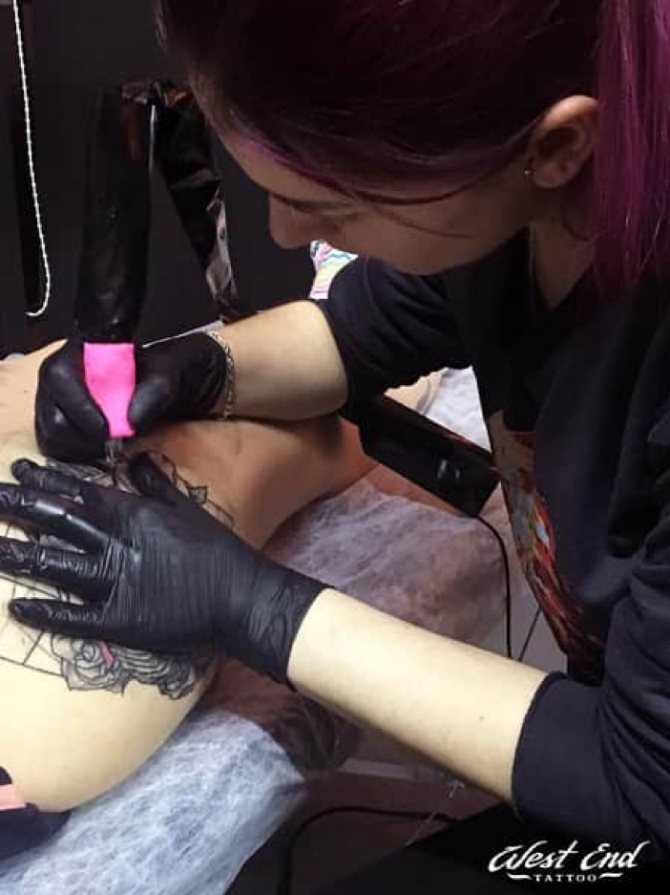
Proper care of a fresh tattoo - the first method
For this method, you will need ointments and disposable diapers. The appropriate ointment will advise the master. These are usually products containing D-panthenol, healing oils, antiseptics, and vitamin F, which are effective in soothing irritation.
A disposable diaper can be purchased at any baby supply store. You don't have to look for name-brand products. All diapers have approximately the same composition. The purpose of the diaper - to prevent moisture, dust, dirt on the unhealed tattoo. Unlike the film, the diaper does not prevent the skin from breathing, and therefore it does not stain. In addition, the material absorbs excess pigment particles.
Rules of skin care after tattooing:
- After the session, in 3-4 hours remove the disposable diaper, wash the place with warm water and antibacterial soap.
- The drawing is treated with chlorhexidine.
- Apply cream and cover the drawing with a new diaper.
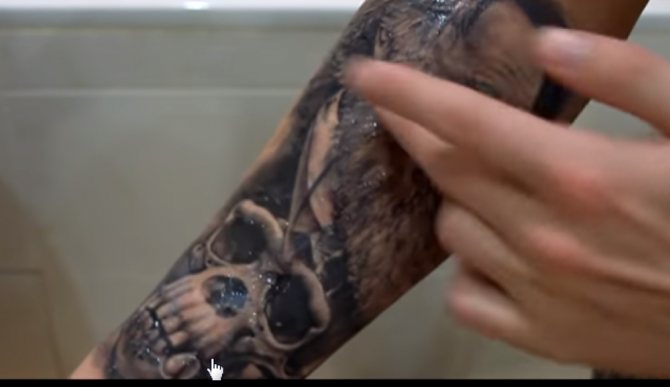

These steps must be repeated every 5-6 hours during the first four days. The diaper will absorb some pigment all these days - this is a normal process. Do I need to care for my tattoo at night? No, it is enough to carry out grooming measures before and after sleep.
After 5 days, you can stop covering the drawing with a diaper and only continue to use the ointment. The tattoo will lighten by this time - this is normal. After healing, the brightness of the colors will return.
Period of use
Healing of the tattoo under the film occurs in several stages:
- The first day after application, the tattoo under the film does not change, the design retains its original appearance;
- On the second day there are violent processes: in the area with the inflicted image becomes warm, yellow colored bursa is released, it mixes with the excess dye, as a result forming a dark liquid;
- On the 3rd-4th day after the image has been applied to the skin, the dark mass evaporates, the film shrinks, its surface looks as if it is cracked;
- On the 5th or 6th day, the bandage can be removed.


The speed of healing of the injured area is different for everyone, it depends on the age of the person, his body and external factors. The properties of Suprasorb film help to speed up and facilitate the recovery process. Wearing a dressing for more than six days is necessary only in very rare cases, generally four days is enough.
Care with the healing film - the second method
A special breathable film on hypoallergenic glue is used to heal the tattoo. It does not need to be changed, the drawing does not need to be washed and treated with ointment. It does not interfere with daily activities and gentle washing. After 5-6 days the film is removed.
How does the tattoo behave under the film:
- On the 1st day after visiting the salon, the design looks the same as it will always look.
- On the 2nd day, the temperature of the skin under the film rises, the bloody liquid mixes with the excess pigment particles, forming a dark slurry.
- On the third or fourth day the liquid evaporates and the skin shrinks a little.
The film is removed on the fifth-sixth day. Before removing, the skin is steamed in a warm bath for 20 minutes. Remove the film slowly and carefully. If it is removed badly, it is dried with a hair dryer.
Care of a tattoo after removal of a film is skin washing and greasing with any moisturizing cream. Creaming the tattoo area can be continued until the feeling of dryness disappears.
Features
The properties of the healing film allow it to give effective results and stand out favorably among the outdated methods of care for freshly applied tattoos. The features of the modern dressing are as follows:
- Reduced healing period by about a factor of three. Tissue recovery takes less than a week, whereas it used to take up to two weeks;
- Reliable fixation, with any form of clothing;
- Does not cause discomfort, prevents friction of the tattoo on clothing and bedding;
- Protects against the emergence and development of various bacteria;
- Does not allow the penetration of moisture, with the film you can take water procedures and play sports;
- Condensation and pus formations do not form under the dressing, thanks to the permeability feature. The film does not interfere with the skin's breathing, the liquid flows out freely, and does not penetrate back in;
- The dressing has a bactericidal adhesive, so that skin irritations and allergic reactions do not occur under it;
- Transparency allows you to watch the healing process through the film;
- The film is simply and easily removed from the body after the healing of the skin.
To use the film is quite simple, you need:
- Separate the paper layer from it;
- Press the side with the adhesive tightly against the tattoo over the entire area;
- Remove the top layer of film.
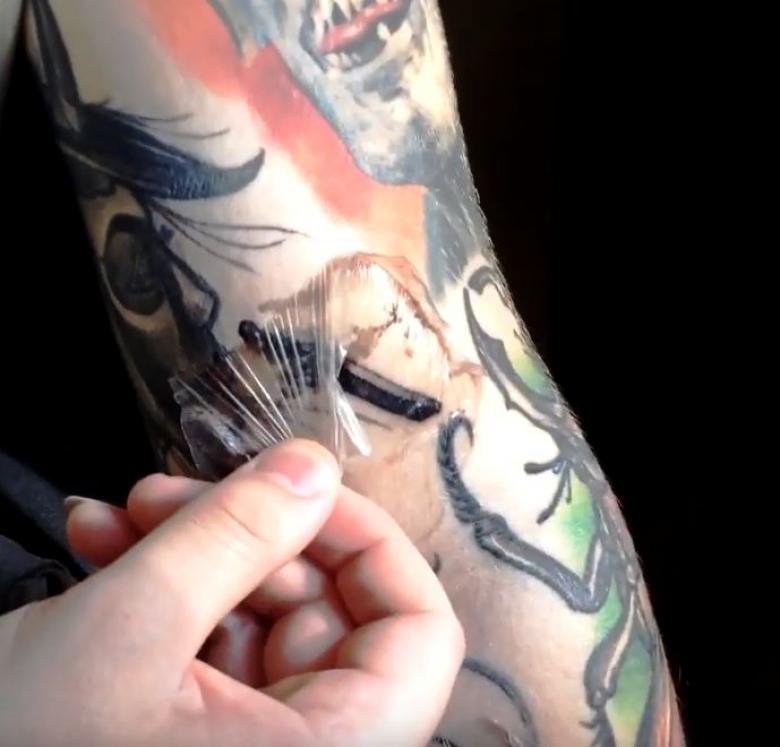

It should be noted that the bandage should overlap the area by 1.5 cm more on all sides of the tattoo. If the picture is large, then it is necessary to glue several films with an overlap of more than 2cm. It is necessary to remove the old film and use a fresh one in the same way as when gluing on a small tattoo.
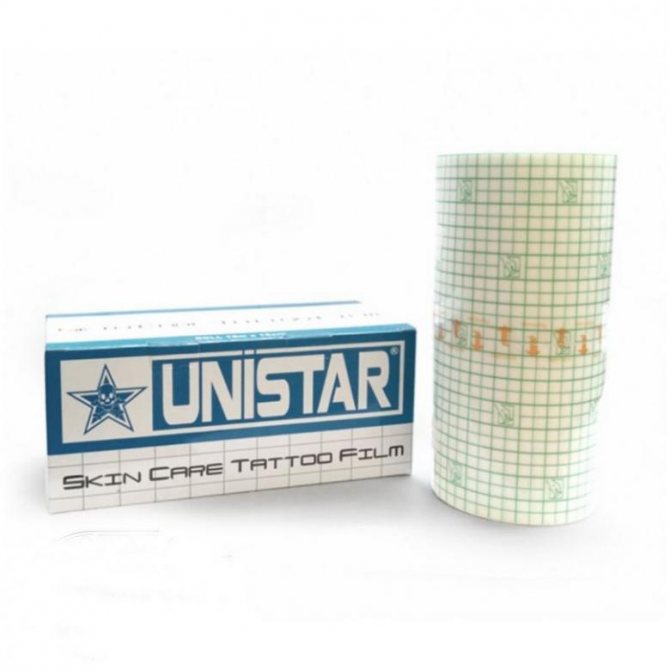

Permanent care for tattoos
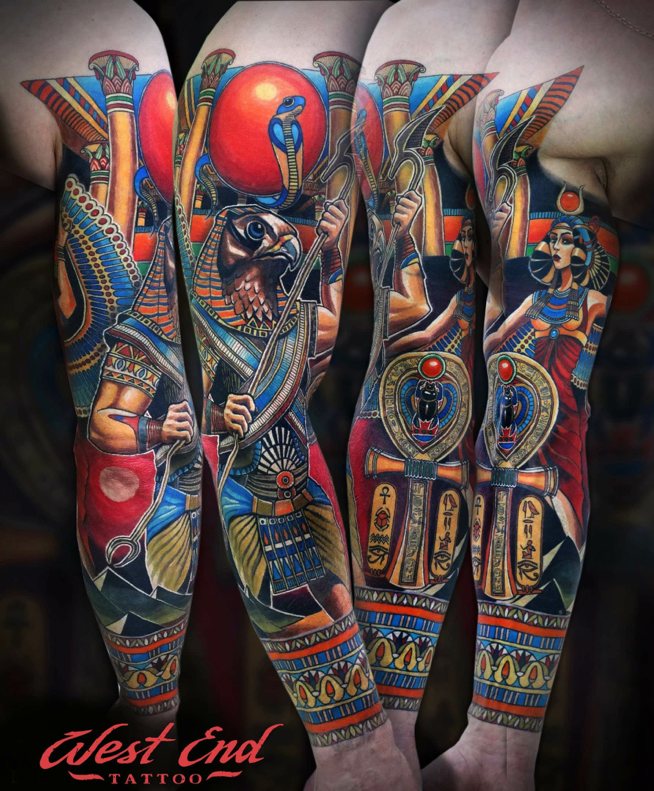

To maintain the beauty of the tattoo, it is necessary to take care of it constantly:
- Lubricate the image with sunscreen with SPF 50 when going out in the sun. The cream should be applied after every bath.
- Keep an eye on the image at all times. If a tattoo changes its appearance quickly you should address to the master who made it.
- Periodically renew the drawing - about once every 10-15 years.
Share this link:
Removing
It is advisable to remove the film from the tattoo after five days after applying the sketch. This period is sufficient for the body drawing to go through all stages of healing, and the removal of the bandage did not cause any damage or injury. During this period, new skin tissue is formed, which does not require special care. The main thing is to remove the dressing correctly without harming yourself.


When removing the protective coating, you need to follow the recommendations given in the instructions to the film:
- steaming with hot water for twenty minutes, which will allow you to remove the film without unnecessary problems;
- picking up the edge, gently pull the film, gradually pulling it away from the skin, so it is easier and more accurate to remove the bandage;
- Having removed the film, you must rinse the tattoo with warm water, washing away the remains of blood stains and glue.
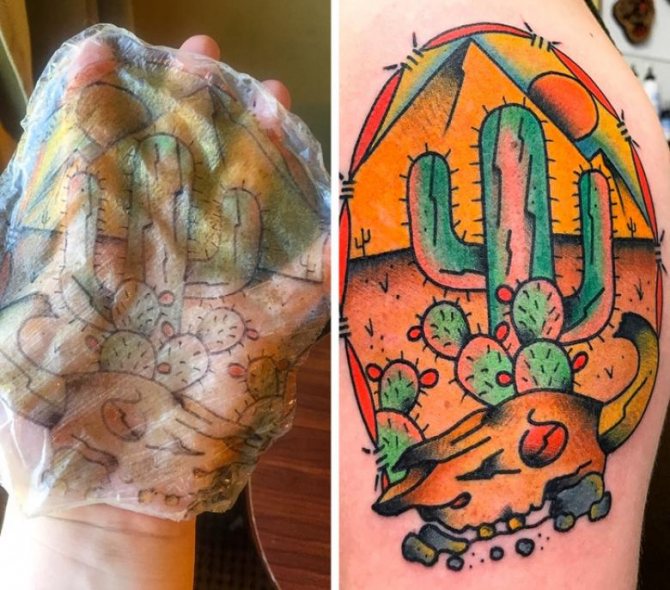

After all the necessary actions to treat the skin with antiseptic, then spread a thin layer of cream with panthenol.


Treatment
The elimination of itching from the tattoo will depend on the cause. For example, a person with eczema or psoriasis may need to see a doctor to get treatment for these conditions. An allergic reaction may require immediate medical attention to stop the body's autoimmune reaction.
To alleviate the itching caused by the normal healing process, a person should:
- Avoid scratching the tattoo
- Avoid scratching the scab
- Avoid using loofahs and scrubs
- Apply creams or ointments as recommended
- Keep creams or ointments in the refrigerator, as refrigeration may help with the itching
- Protect tattoos from the sun
- Avoid bathing during the time recommended by the tattooist
- Take allergy medication if you have a mild allergic reaction
Price for services
| LASER TATTOO REMOVAL TATTOO REMOVAL LASER Q-SWITCH, LASER COMPLEX MULTILINE, YAG | |||
| № | Name | Name Name | Price, rubles |
| Tattoo removal | |||
| 1 | Up to 5 sq. cm | 5 min | 500 |
| 2 | Up to 20 sq. cm | 10 min | 1000 |
| 3 | up to 100 sq. cm | 15 min | 2000 |
| 4 | Up to 200 sq. cm (max) | 20 min | 3000 |
| Removal of permanent make-up | |||
| 5 | Eyebrow tip, arrow tip | 5 min | 500 |
| 6 | complete eyebrows, complete arrows | 10 min | 1000 |
| 7 | lip contour | 10 min | 1000 |
How do I know when the restoration process is over?
Among the main signs are the following:
- Absence of swelling, redness, peeling;
- Crusts have descended;
- The design is clearly visible and satisfactory in appearance.


If the condition has improved, the tattoo is completely satisfactory and there is no discomfort, then you can relax and admire the selected drawing, because the most unpleasant and difficult periods are passed.
Before the shower
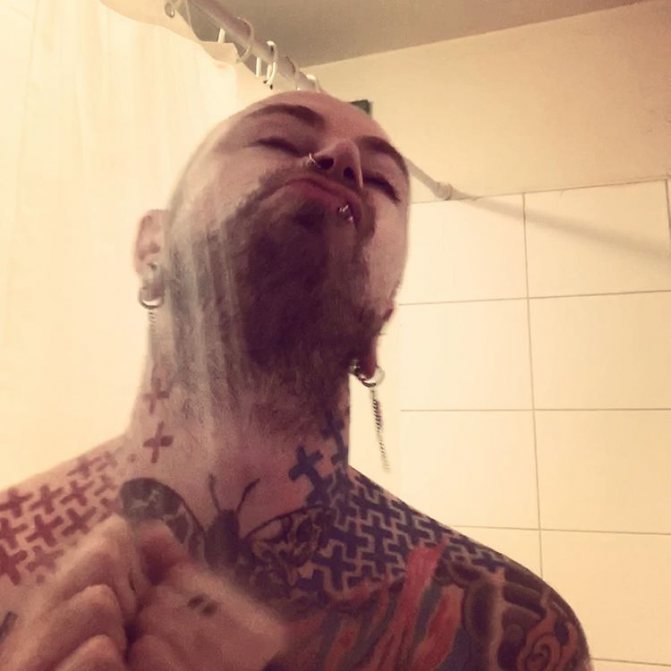

If you have a fresh tattoo, you probably still have plastic wrap as protection. Above all, follow your tattoo artist's instructions. However, here are a few recommendations to keep in mind before showering:
In case you need to remove the film, remember to do it with care and not to pull. It may stick in some places and if you are too harsh, you may hurt yourself (and in the worst case also damage the tattoo).
In case a bandage is used and the bandage sticks to the tattoo, use water to make it easier to remove. Be careful not to accidentally pull off and damage the wound in the sticking place, otherwise bacteria can enter and it can become infected. In this case, your body image will be ruined and you will need to have it corrected.
It is also recommended not to rub the tattoo with your clothes when removing them, especially if you no longer use a bandage.
Avoid baths and decide in advance how you will shower, at least for the first week, because if you wash the tattoo, the risk of infection increases. Baths include not only bathing at home, but also bathing in lakes, pools, rivers...
What to do if a tattoo heals too slowly
Each person, due to physiological characteristics, endures the process of tattoo healing differently. The inflamed wound will be painful within a set time frame. The recovery time of the skin is relative - it can take from 2 to 6 weeks.
The client needs to analyze if there are reasons that prevent proper healing. Perhaps an excessive amount of ointment is applied, which prevents oxygen from getting in, or the person is constantly covering the tattoo with tight clothing. Even long showers cause the crust on the tattoo to swell, causing the inflammation phase to last a long time.
The problem may be that the person is taking medication or drinking alcohol, the body's defenses are compromised.
Acquisition
Suprasorb is a film surgical dressing. If not available at the tattoo parlor, it can be purchased at the following places:
- another salon;
- via the Internet: on the websites of pharmacies and other special companies;
- Drugstores in hospitals with a surgical department.


In terms of size, the film can be in several variants:
- 5x7cm;
- 10x12cm;
- 10x25cm;
- 15x20cm;
- 15x25cm;
- 20x30cm;
- 10х100cm (in a roll).
In addition, the film product is available in several forms: in sheets or in a roll.


Sheet media is dispensed by the piece, so it is more profitable to buy, but this option is convenient for small tattoos. For large tattoos it is more expedient to buy a roll.
Factors that affect the effectiveness of tattoo removal:
- The paint with which the tattoo or tattoo was made: very difficult to remove; the so-called "burn" and pigments that are made on the basis of metal oxides. Most modern tattoo paints are good to remove. Tattoo ink and tattoos done with regular ink are the best to remove.
- Drawings that were applied to the skin decades ago are easier to remove than modern ones applied in recent years.
- The depth to which the paint has been "driven" in. The laser beam acts only on the top of the pigment. Only after removing the top, rather thin layer of paint, the beam can act on the "next layer". The deeper and more paint has been driven in, the more procedures will be needed to remove it.
- The color of the paint has a huge impact on the effectiveness of tattoo removal. The darker the paint, the easier it is to remove. Therefore, black tattoos are most preferable for laser removal. The lighter the paint, the harder it is to remove. Paint close to flesh color, beige, green and yellow is almost impossible to remove with a laser.
- The color of the patient's skin. If the skin is swarthy, some of the beam energy is absorbed by the dark skin pigment, making the procedure less effective.
- It is easiest to remove tattoos in the breast area, on the arms and legs, buttocks, and on white skin they disappear most quickly.
- On the fingers, as well as in other places where the amount of fatty tissue is minimal, laser tattoo removal is longer. Scarring in the tattoo area (consequence of tattooing or previous laser removal) slows down the pigment removal, and sometimes makes it practically impossible
- Modern complex drawings require a long removal time. The reason for this is the intricacy of the design and the persistence of the ink.
After complete removal of the black pigment, there is a brown pigmentation, which absorbs for a long time (about 12 months), for persons with tendency to hyperpigmentation - longer.
How to keep the tattoo bright and clear?


Have you ever wondered why some tattoos remain bright and clear for a long time, while others can lose their original appearance and look faded, as if "washed out", the very next summer? We already started talking about this in the article "Why a tattoo fades and changes color. "There are a number of factors that affect the appearance of a tattoo over time. The good news is that we can influence some of them, and it will help keep your favorite design rich and contrasty for a long time.


The healing process
Tattoo healing is a very important stage that directly affects the appearance of the finished design.
- When the skin begins to peel off, do not tear it off - wait until it comes off on its own.
- Regularly lubricate the skin with the cream, which was advised to you by the master.
- Keep your skin as loose as possible and don't let your clothes rub against it.
- Do not use scrubs and chemical peels, do not rub the area with a sponge.
- Avoid direct sunlight, baths or swimming pools.
Why tattoos turn pale after healing
Over time, the feeling of novelty is lost and we begin to treat the tattooed skin areas the same as the rest of the body. Herein lies the mistake. Environmental factors constantly affect the ink under the epidermis, causing unwanted changes. Simply put, colored and black and white tattoos fade and their outlines float. If you try to limit the destructive effect of external factors, you can postpone the moment of correction for years or even decades.
Sun
Have you ever noticed that a dark t-shirt loses its color saturation at the end of the summer season? The same thing happens with the pigment that tattoo artists use. All colors, including black, slowly fade under the sun's rays, so the less light you get on your tattoo, the better.
How to achieve this:
- Cover the tattoo with clothing in sunny weather.
- Use a sunscreen with particles that create a physical barrier. Apply it to your skin before you go outside, even in cloudy weather.
- Do not sunbathe in a tanning bed or on a beach.
Chemicals
Aggressive chemicals can discolor pigment just like colored clothes. If you've used bleach on your jeans, you know what I mean. Of course, few people would think of pouring bleach on a tattoo, but contact with it is unavoidable from time to time.
So what can you do to keep a tattoo from fading from chlorine?
- Most pools are filled with chlorinated water. If you swim more than once a week, sign up for a pool where the water is ionized rather than chlorinated. You can also swim in open bodies of water.
- Household chemicals and cleaning products often contain chlorine, so wear gloves and avoid getting the product itself or its solution on your skin.
Alcohol
Alcohol also negatively affects the color of tattoos, so to keep your mini-masterpiece bright, you need to limit skin contact with alcohol-containing liquids:
- Do not use lotions, deodorants and other alcohol-based cosmetics;
- Do not use alcohol-based gels to disinfect the tattoo area.
Moisturize
The amount of moisture in the skin directly affects the appearance of the tattoo, so it's important to maintain a water balance to keep the design as full as possible for as long as possible. Alcohol-free moisturizers are excellent for skin care, especially during the heating season when humidity levels drop drastically. But the main way to replenish moisture throughout the body is to drink regularly. Drink clean water without waiting until you feel thirsty, and your skin will look great.
Rate this article:
Tattoo healing - how long does the recovery period take?
The first tattoo is a new experience, so the rehabilitation period raises a lot of questions. There are no clear time limits in this matter, as everything depends on the structure of the particular skin and the overall immunity of the person.
In some cases, the injured area comes back to normal after a few days, in others the skin will need more than a month. In this case it is necessary to take into consideration the place of the tattoo: let us assume that the healing process takes more time on the ankle. In places where the skin is close to the bone, the healing will be slower and more difficult.
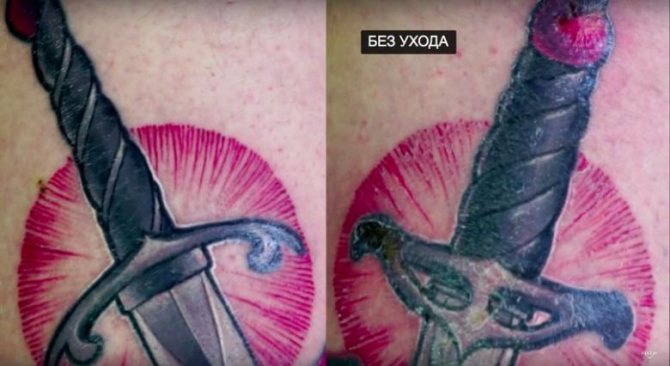

Experienced masters agree that on the average 6 weeks are required for full recovery, but within 14 days the tattoo will get quite an acceptable look.
For a couple of days there will be a crust. The crust is formed due to the excretion of the suds after the paint has been hammered in. It may be itchy and flaky, but it should never be scratched or brushed. This recommendation requires special attention.
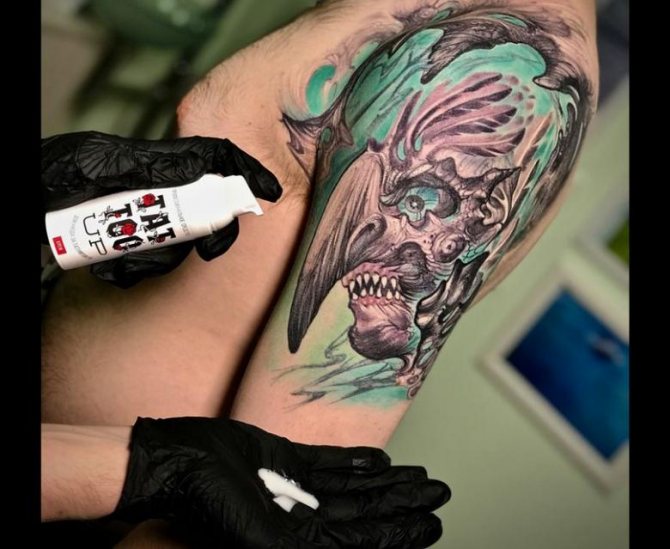

Proper care can help relieve the discomfort. Usually, specific healing remedies are advised by the master on the basis of experience. This period just needs to be endured and gradually the crust will begin to descend on its own and after a week will disappear.The recovery period may be prolonged in the case of the need for correction.
Contraindications before a tattoo
What can not be done before a tattoo?
- It is impossible to go to the tattoo master on an empty stomach or after a sleepless night. As mentioned above, in order to reduce stress to the body, be sure to get a good night's sleep and eat.
- Do not take any blood thinning pills (a day - 12 hours) Do not even think about taking painkillers before the procedure, they all have a thinning effect on the blood, so that during the session the blood will flow more abundantly and it will be harder to stop.
- Do not drink alcoholic beverages before the tattoo (1-2 days). And forget to think about drinking for courage. It will be better if you exclude alcohol before a tattoo and for a few days after it is applied. Why it is impossible to drink before a tattoo? All because alcohol, like painkillers, promotes blood thinning and increased bleeding. This can interfere with the work of the master and as a result, you will not only get the result that you would like, but also the tattoo will heal much longer.
- What else you cannot do before a tattoo is sunbathing. If you thought you could just go and get a tattoo after a long day at the beach, you were wrong. Exposure to the sun damages the skin and causes burns, resulting in excessive drying of the skin as well as flaking. Now imagine putting a tattoo on such damaged skin. Not only would the tattoo look ruined, it would be much more painful to put on and take longer to heal.
- Did you know that you should not drink coffee before a tattoo? It is highly recommended that you avoid caffeine consumption (a day to 12 hours) before getting a tattoo, as it has side effects such as blood thinning and drying of the skin. Caffeine consumption can also raise blood sugar levels and prevent the tattoo from healing during the first few days, when the tattoo should stop bleeding and begin to dry.
After Showering
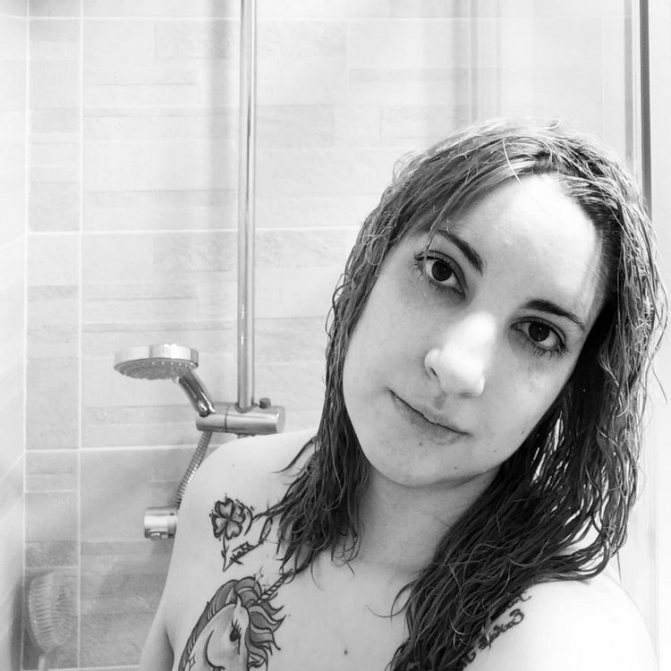

After showering, you're clean, but your tattoo is still at risk until it heals completely. This is why it is highly recommended to take the following tips into consideration:
Dry the tattoo with a clean towel (gently touching the injured area). If you don't have one (or aren't sure if it's clean), use paper towels. Dirty towels can get bacteria on your skin and cause the tattoo to become infected.
Dry the tattoo very carefully. This means no rubbing: lightly tap it with a towel and paper to gradually absorb the water.
Again, follow the advice of your tattoo artist; he or she will tell you what to do after you shower. Most of them will recommend that you use a cream to accelerate healing. In this case, remember that the less, the better, and that you should apply a very thin layer in order for the tattoo to heal properly.
